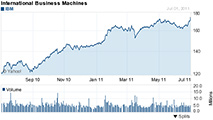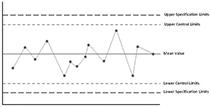The psychedelic drug psilocybin demonstrates rapid and long-lasting efficacy across neuropsychiatric disorders that are characterized by behavioral inflexibility. However, its impact on the neural activity underlying sustained changes in behavioral flexibility has not been characterized. To test whether psilocybin enhances behavioral flexibility by altering activity in cortical neural ensembles, we performed longitudinal single-cell calcium imaging […]
Abstract
Within the last years, exercise training and rehabilitation as add-on to medical treatment has become an emerging field in pulmonary hypertension. Owing to the beneficial effects of exercise training in pulmonary hypertension, the new European Respiratory Society/European Society of Cardiology guidelines for pulmonary hypertension recommended a supervised and closely monitored exercise and respiratory training/rehabilitation as add-on to medical therapy (class IIa, level of evidence B). In this article, different training modalities, effects of exercise training, possible pathobiological mechanisms of action, and future research questions are discussed.
Keywords:
Exercise training; Pulmonary arterial hypertension; Pulmonary hypertension; Rehabilitation; Training effects.Figures

Fig. 1 Duis aute irure dolor in reprehenderit in voluptate velit esse

Fig. 2 Duis aute irure dolor in reprehenderit in voluptate velit esse

Fig. 3 Duis aute irure dolor in reprehenderit in voluptate velit esse
References
- Cashman K.D. Vitamin D requirements for the future-lessons learned and charting a path forward. Nutrients. 2018;10:533 doi: 10.3390/nu10050533. – DOI – PMC – PubMed
- Cashman K.D., Ritz C., Kiely M. Odin Collaborators. Improved dietary guidelines for vitamin D: Application of Individual Participant Data (IPD)-level meta-regression analyses. Nutrients. 2017;9:469 doi: 10.3390/nu9050469. – DOI – PMC – PubMed
- Pilz S., März W., Cashman K.D., Kiely M.E., Whiting S.J., Holick M.F., Grant W.B., Pludowski P., Hiligsmann M., Trummer C., et al. Rationale and plan for vitamin D food fortification: A review and guidance paper. Front. Endocrinol. 2018;9:373. doi: 10.3389/fendo.2018.00373. – DOI – PMC – PubMed
- Pilz S., Trummer C., Pandis M., Schwetz V., Aberer F., Grübler M., Verheyen N., Tomaschitz A., März W. Vitamin D: Current guidelines and future outlook. Anticancer Res. 2018;38:1145–1151. – PubMed
- Cashman K.D. Vitamin D requirements for the future-lessons learned and charting a path forward. Nutrients. 2018;10:533 doi: 10.3390/nu10050533. – DOI – PMC – PubMed
- Cashman K.D., Ritz C., Kiely M. Odin Collaborators. Improved dietary guidelines for vitamin D: Application of Individual Participant Data (IPD)-level meta-regression analyses. Nutrients. 2017;9:469 doi: 10.3390/nu9050469. – DOI – PMC – PubMed
- Pilz S., März W., Cashman K.D., Kiely M.E., Whiting S.J., Holick M.F., Grant W.B., Pludowski P., Hiligsmann M., Trummer C., et al. Rationale and plan for vitamin D food fortification: A review and guidance paper. Front. Endocrinol. 2018;9:373. doi: 10.3389/fendo.2018.00373. – DOI – PMC – PubMed
- Pilz S., Trummer C., Pandis M., Schwetz V., Aberer F., Grübler M., Verheyen N., Tomaschitz A., März W. Vitamin D: Current guidelines and future outlook. Anticancer Res. 2018;38:1145–1151. – PubMed
